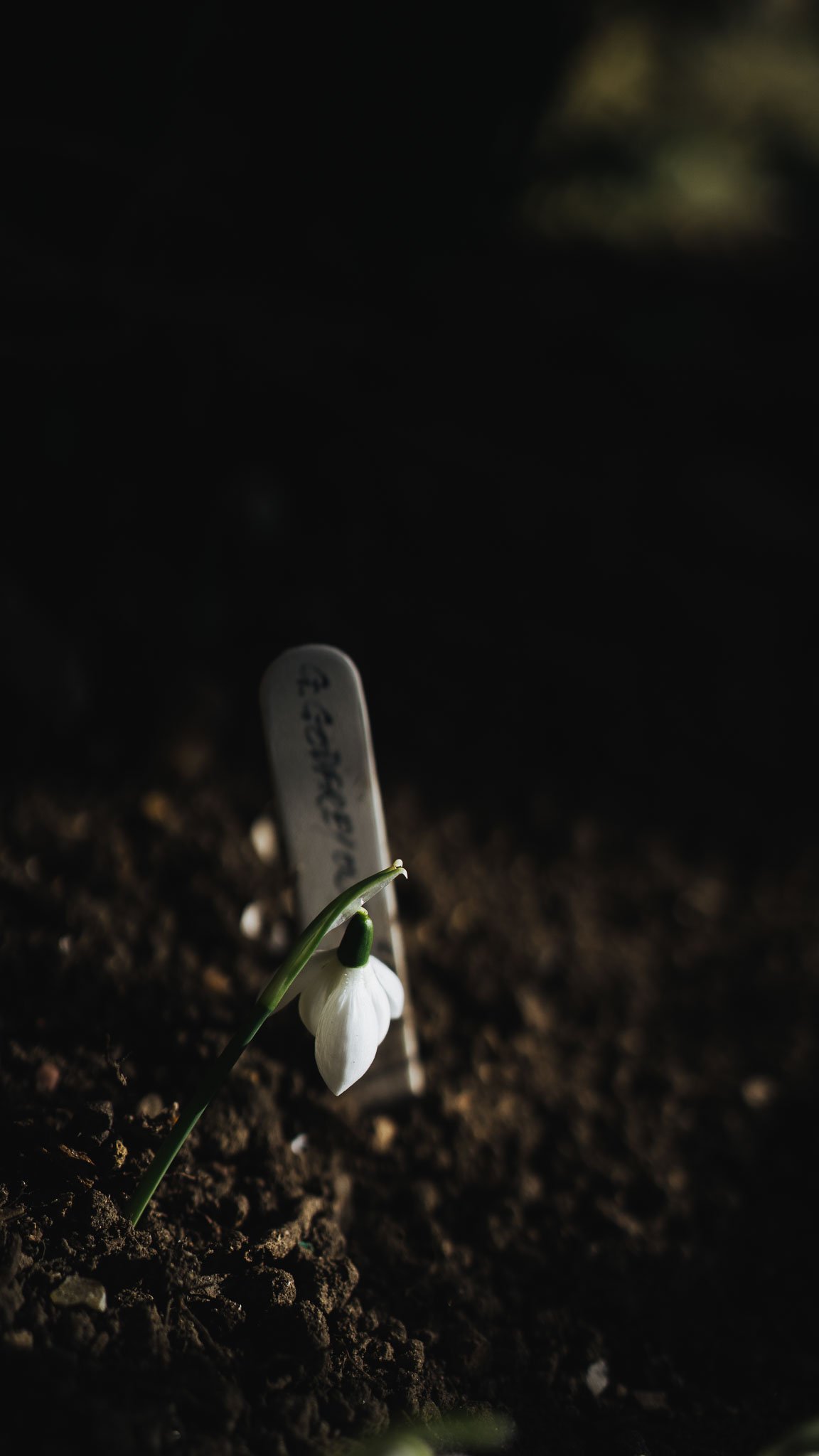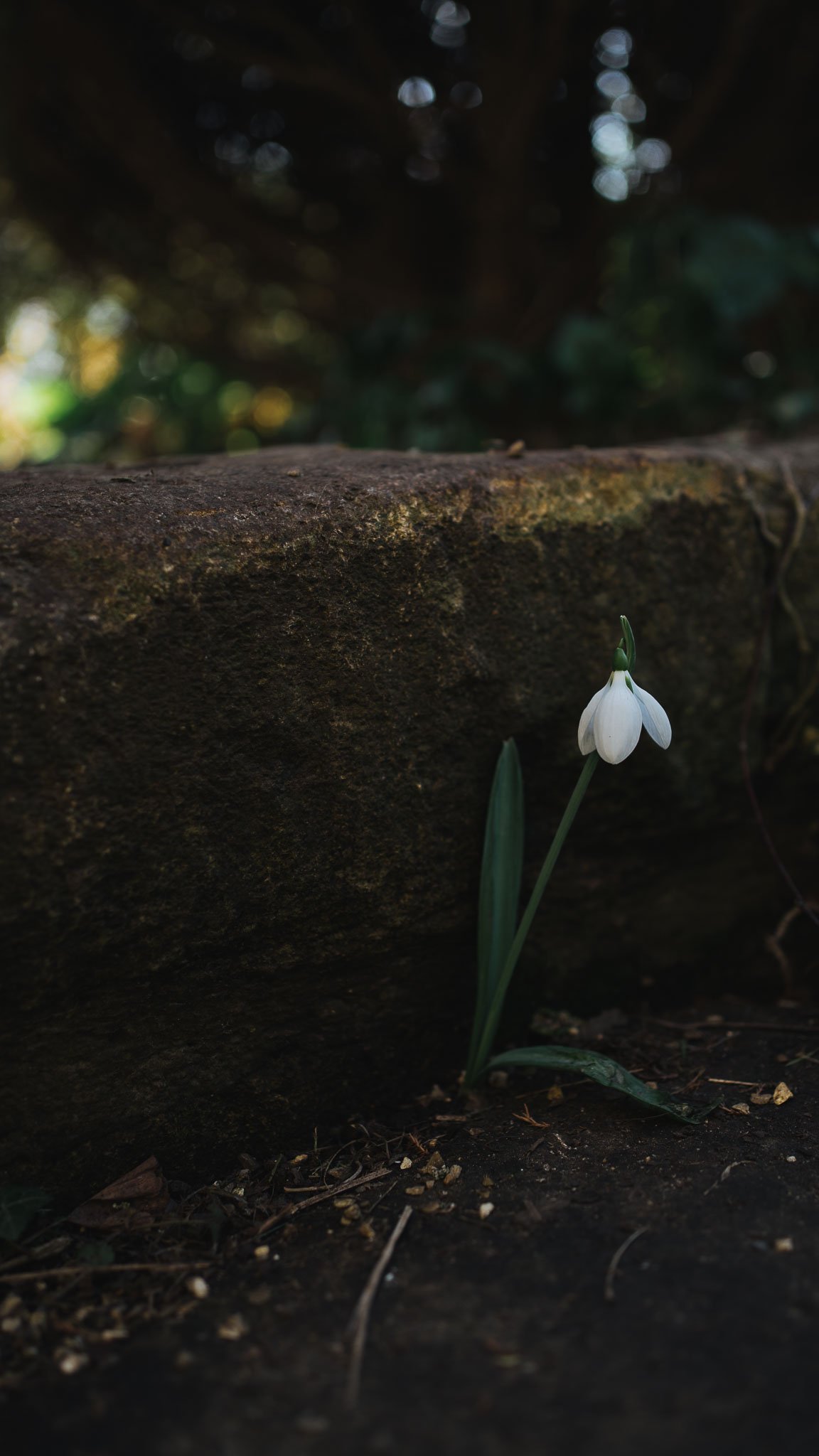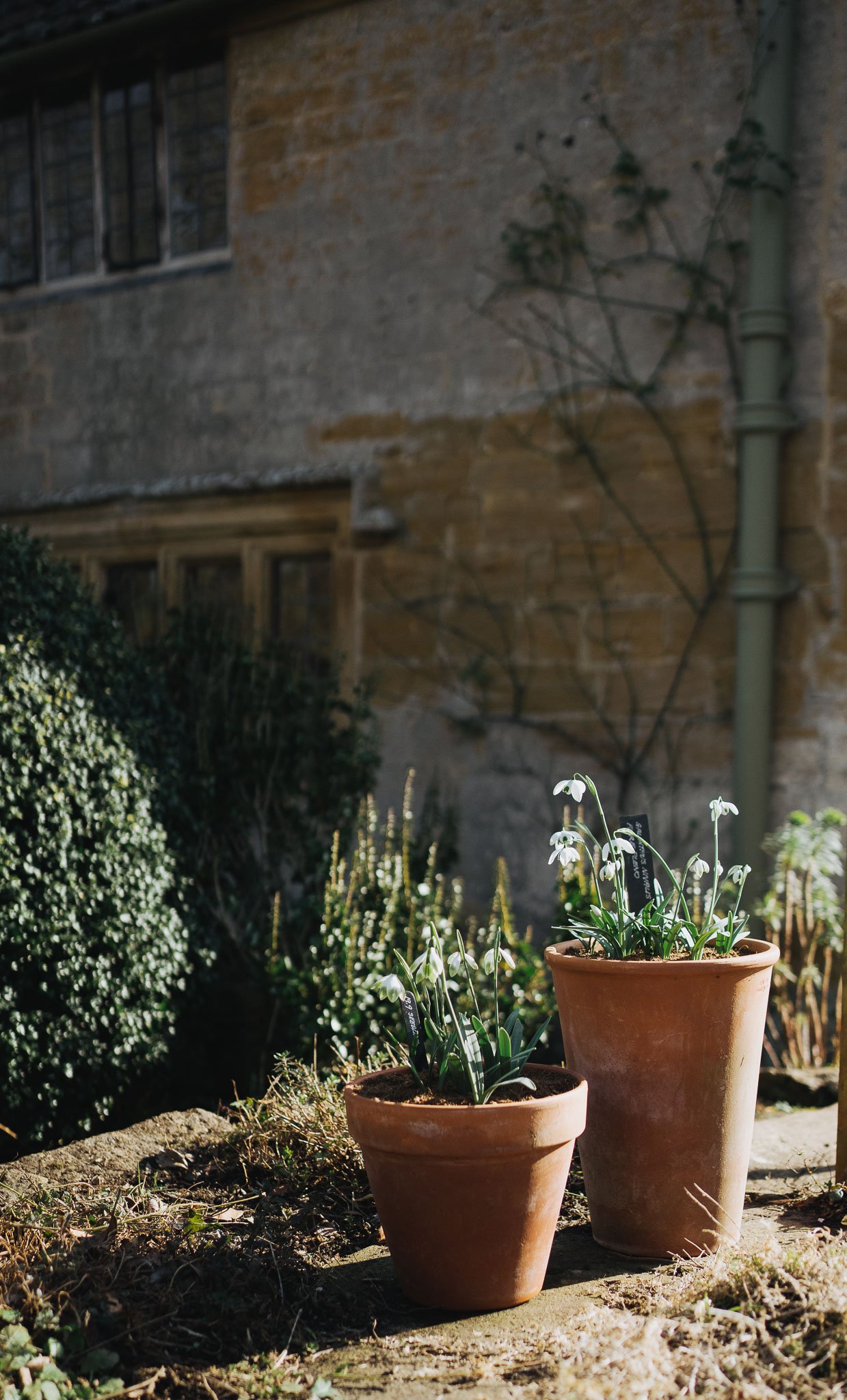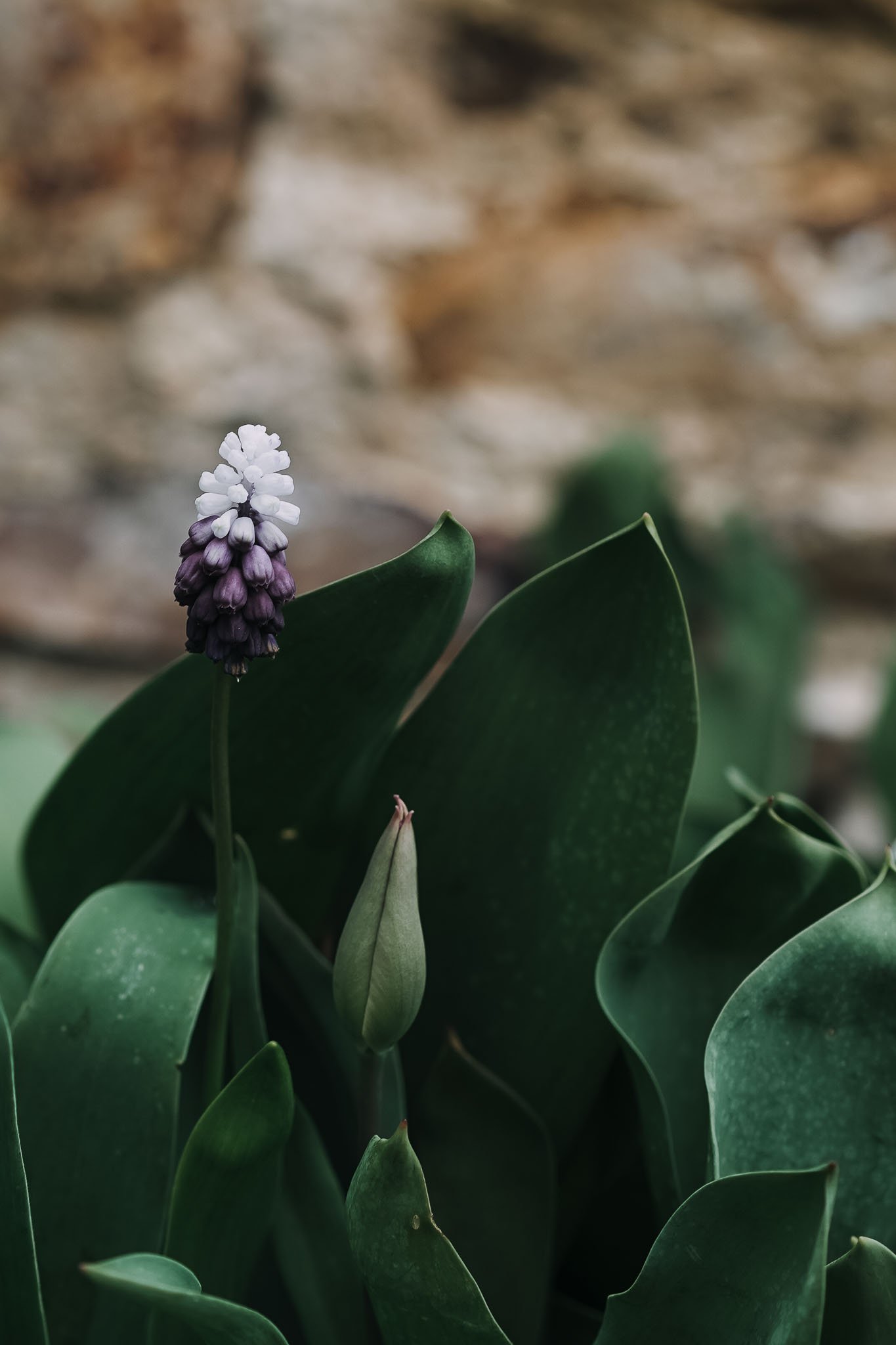What is in flower in February
Snowdrops
February is rather a brutal month. Not only because the waiting is interminable (although it is), but because it will reflect back to you how organised your past self was in the autumn.
Unless you have been perennializing a snowdrop collection, and jolly well done you if you have, February flowers require a bit of preparation. On the theme of snowdrops, I am mortified to admit that this year is the first year that I have got to witness the spectacle that is East Lambrook Manor in February. It is a short skip from Malus Farm and I really have no excuse.
Or maybe my excuse is self-awareness. I need no more passions, no more hobbies or collections. Everyone knows that snowdrops are the crack cocaine of the plant world; one dabbling bulb in the green and suddenly you are a a raging galanthophile, bidding for increasingly expensive flowers on the dark web. I knew when I was seriously considering whether I should blow £50 on a Galanthus 'Alburgh Claw' just on the basis of a beautifully photographed image in Gardens Illustrated that I should step slowly but carefully away.
Ah, but if we should always do what we know we should do. Not two days after swearing I would never come so close to temptation again, I booked a ticket for the snowdrop festival at East Lambrook Manor. It was so astonishingly beautiful, that I did a whole write up of it in Gather. If you are a member, you can read it here. If you need to join first, you can do that here.
The first spring bulbs: crocuses
I came home again with eyes open and a heart ready for beauty. February requires this; you need a little more acuity to find the jewels. One of my solutions to this is to frame the jewels in a container, and to bring it closer to the eyes. With the assistance of some small gauge chicken wire, I have nurtured some crocuses through the colder months and they are starting to flower in the most gloriously cheerful colours. As the first one bloomed, I carefully pulled off the protective wire and tucked in moss around the flowers.
This is a great tip for all bulbs and shorter flowers in pots. Moss or gravel not only looks lovely and ‘finished’ but it also means that the petals are protected from splashing if there is a sudden downpour, or you are a little heavy handed with the watering.
Second tip: if you rely on rain to water your pots, it is going to end in tears and disappointment. All pots need watering (and feeding) by hand in the growing season (i.e. before they flower) and bulbs are no exception. If you have stubby flowers, you only have yourself to blame. Unless we have a March heatwave, in which case, it isn’t your fault at all, they just bloomed too soon. But generally, water.
Bulbs in pots are wonderful for spending months of important but visually boring growing time out of the way, and then being moved to the pride of place as soon as they are looking wonderful. I am just mulling over whether I could put my oversized bowl on the kitchen table to make the most of the joy that they bring. Bear in mind though, the warmth of the house will bring flowers on and send them over quicker than being out in the February chills. A compromise position might be on a table in the courtyard where I can see them from the windows. Like so much in life, it is a tradeoff. Live fast and die young, or be sensible and hope that it pays off in the long-term.
Yes, I brought mine indoors. I am so bored of being the sensible one.
The first Spring blossom
Many will say that sloe is the earliest of the true spring blossoms, but it is not true. It is beaten every year by Cornus mas, the Cornelian cherry. Like gold leaf, it glitters in a rich, metallic yellow. (I say Spring blossom, because my Autumn (winter really) flowering cherry flowers from October.
For more on blossom, which is best for cutting and which takes well to forcing, read a guest blog post for Gather for the utterly wonderful Pyrus here.
Cornus mas
The very last of the winter clematis
Much of my winter clematis, a well-meaning ‘Freckles’ is covered in fluffy seeds. However, I know from experience that they will put one last flush of flowers in February and I only have to look hard enough and I will find them.
Hellebores
And of course there are hellebores. Of course there are. I grow mine at the end of the kitchen garden, down by the studio, because the soil is moist and shady. The thing about hellebores, unless you grow them in pots, is that you have to lie on the ground to appreciate how utterly wonderful they are. And I do adore a hellebore, so cutting them and bringing them indoors is the best thing to do.
Philip Craddock, florist to the stars, swears blind that you can cut hellebores with the stamens intact if you make a slit all the way up the stem a millimetre deep and then plunge them into cool water for 24 hours. I am trying it now. I’ll let you know if they hold.
Post script
In keeping with the theme of February’s flowers are there if you look, after I had finished writing this, I saw that the pot next to my studio door is full of Muscari neglectum. Muscari armenaicum, the paler blue variety, run wild in my front garden (very few things grow there, which is why I never mention it) but I prefer the more dramatic, fade to black, colour scheme of the M. neglectum.









